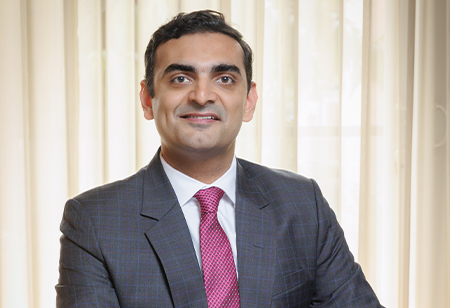Dr. Aakaar Kapoor, CEO & Lead Medical Advisor at City X-Ray and Scan Clinic

Dr. Aakaar Kapoor, MD, is a distinguished Radiologist, Entrepreneur, and CEO at City X-Ray & Scan Clinic, spearheading innovative healthcare solutions. Holding an MD in Radiodiagnosis from KLE University, with an MBBS from UCMS, affiliated with Guru Tegh Bahadur Hospital, Aakaar showcases a wealth of expertise in the medical realm. With a prolific career spanning over 16+ years, he leads a team renowned for pioneering AI-based software and clinical trials in collaboration with multinational corporations.
Neurological disorders pose a formidable challenge in healthcare due to their intricate involvement with the complex nervous system. These conditions stand as the second leading cause of global mortality, accounting for 9.0 million deaths annually, and are the primary cause of disability, attributing to 276 million disability-adjusted life-years (DALYs), with nearly half of this burden affecting low and middle-income countries.
Diagnosing and managing neurological disorders requires acute precision and dedication, considering the complexities of the nervous system. These disorders manifest through structural, biochemical, and electrical abnormalities in the brain, spinal cord, and other nerves, leading to a wide spectrum of symptoms. Studies indicate vulnerability to approximately 600 neurological diseases, including dementia, Alzheimer's, epilepsy, stroke, migraine, Parkinson's disease, multiple sclerosis, brain tumors, neuro-infections, and traumatic disorders like autism and brain trauma.
Diagnostic imaging, particularly Computed Tomography (CT) and Magnetic Resonance Imaging (MRI), plays a pivotal role in evaluating and diagnosing neurological conditions.
Role of CT scan in neurological conditions
A brain CT scan is a noninvasive diagnostic imaging method that utilizes specialized X-ray measurements to generate images or slices of the brain. This imaging technique provides more comprehensive details about brain tissue excelling in detailed bone visualization, particularly in the posterior fossa, base of the skull, and spinal canal, an advantage over Magnetic Resonance Imaging (MRI).
Noncontrast CT swiftly identifies acute hemorrhage and significant structural alterations without the concern of contrast-related issues like allergy or renal failure. Using a radiopaque contrast agent, CT efficiently detects abnormal structural lesions such as brain tumors, abscesses, and certain vascular anomalies like arteriovenous malformations. Although rarely used due to MRI availability, an intrathecal agent assists in outlining abnormalities affecting the brain stem, spinal cord, or spinal nerve roots, potentially identifying conditions like meningeal carcinoma or herniated disks, and occasionally revealing a syrinx in the spinal cord. Furthermore, CT angiography, facilitated by contrast agents, effectively portrays cerebral blood vessels, negating the necessity for MRI or traditional angiography procedures.
Role of MRI
In contrast to CT, Magnetic Resonance Imaging (MRI) offers superior resolution when visualizing neural structures, particularly benefiting the examination of cranial nerves, brain stem lesions, and anomalies in the posterior fossa and spinal cord. It serves various neurological purposes, including the diagnosis of brain and spinal cord tumors, eye conditions, inflammation, infections, and vascular irregularities that may precipitate a stroke.
MRI is adept at detecting and monitoring degenerative disorders like multiple sclerosis and can accurately depict brain injuries resulting from trauma. Its advanced capabilities shine in identifying spinal cord compression caused by tumors or abscesses necessitating immediate intervention. Additionally, MRI excels in identifying demyelinating plaques, early signs of infarction, cerebral edema, and various other conditions that can be challenging to visualize using CT imaging.
While the two have their own set of advantages, limitations also persist. In areas due to bony streaks in the brain stem and spinal cord, CT images may show as artifacts, on the other hand, MRI provides clearer images in these regions. Furthermore, the choice between the two often depends on the clinical context, specific indications, and urgency as each of them has its strengths and limitations in visualizing different aspects of neurological conditions.
Choosing between the two - MRI Vs. CT
When comparing MRI scans to CT scans for brain imaging, MRI emerges as the most sensitive and preferred technique, especially concerning brain examinations, due to its superior imaging capabilities.
Notably, MRI is particularly adept at detecting brain tumors owing to its heightened sensitivity. However, CT scans also offer distinct advantages in brain imaging. CT scans excel in speed, making them the preferred choice in cases of acute neurological emergencies or trauma. Additionally, they are more cost-effective and can effectively rule out various neurological disorders. Their faster imaging process makes them less sensitive to patient motion, suitable for individuals who struggle with remaining still during the examination. Moreover, CT scans are often favored for patients who are claustrophobic or have larger body builds, as they do not require entry into a confined space like an MRI machine. They provide detailed evaluations of cortical bone, aiding in the assessment of bone structures and potential fractures, and offer accurate detection of calcifications and metal foreign bodies within the brain. Furthermore, CT scans can be safely conducted on patients with implantable medical devices. In contrast, MRI scans present unique advantages in brain imaging as well.
They are considered safer as they do not utilize ionizing radiation, making them preferable, particularly for children and individuals requiring multiple imaging examinations. MRI's superior soft tissue contrast enables detailed visualization of brain anatomy, ensuring heightened sensitivity and specificity in identifying brain abnormalities. The flexibility of multi-plane imaging in MRI allows for imaging in various planes without physically moving the patient, offering comprehensive visualization of brain structures. Additionally, the lower risk of allergic reactions associated with MRI contrast agents is noteworthy compared to other imaging modalities. Moreover, MRI allows artifact-free evaluation of structures, enhancing the accuracy and clarity of diagnostic information, which might otherwise be obscured by bone artifacts in CT images.
In summation, CT and MRI scans are indispensable tools in diagnosing and managing neurological disorders, offering complementary advantages in visualizing structural abnormalities and neural structures. Understanding the strengths and limitations of each imaging modality is crucial for healthcare professionals to ensure accurate diagnosis and effective treatment planning for patients with neurological conditions.